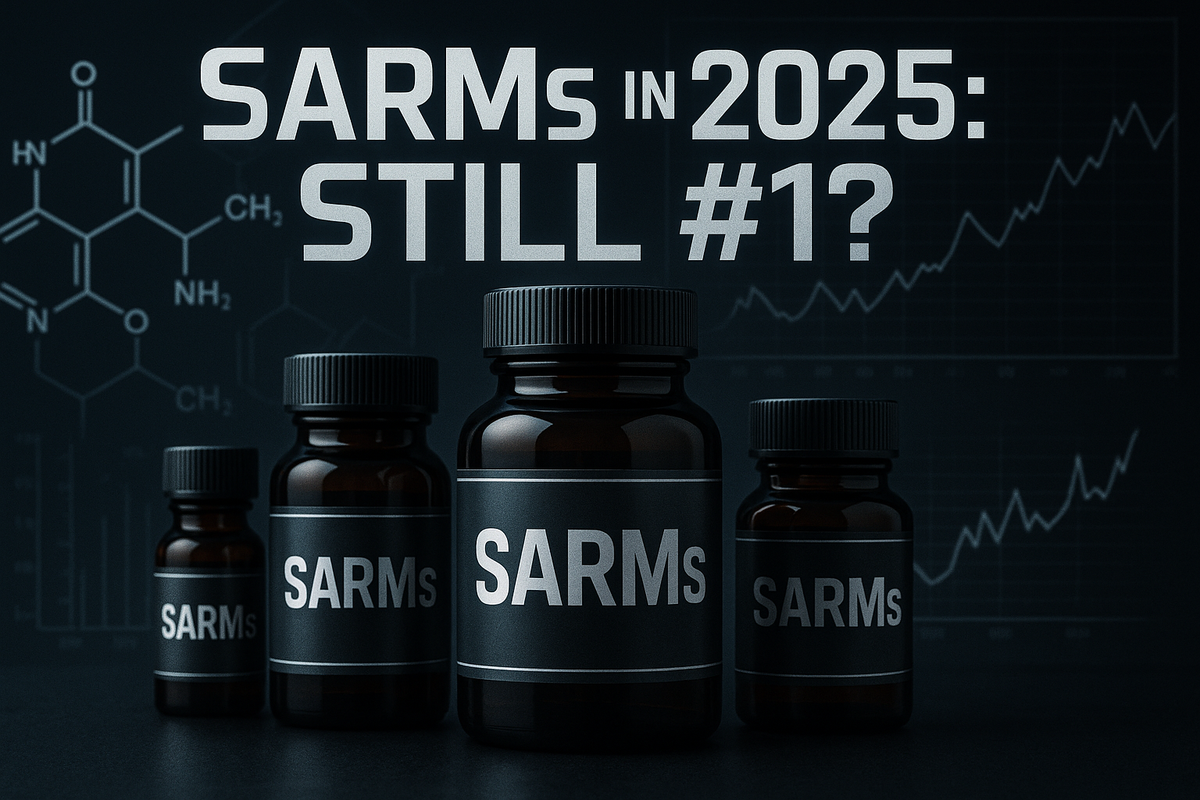
<h1><strong>Are SARMs Still Leading in Research Performance Enhancement?</strong></h1>
<p>In the evolving world of performance research, Selective Androgen Receptor Modulators better known as SARMs continue to capture significant attention. Their unique design, targeting specific androgen receptors, has made them an intriguing subject for scientists and performance specialists alike. While other compounds have entered the spotlight over the years, SARMs remain central to discussions about controlled muscle-building, fat loss, and recovery studies. For anyone navigating this space, identifying <a href="https://ironmountainlabz.com/product-category/sarms/injectables-sarms/" rel="dofollow"><strong>SARMs for sale</strong></a> from reputable sources remains a critical step to ensuring accurate data and reliable outcomes.</p>
<p>But what makes SARMs stand out in the first place? And are they still leading the way in research, or has the industry moved on to more advanced compounds? Let’s dig into what current research trends reveal about their place in today’s performance-enhancement landscape.</p>
<h2><strong>The Staying Power of SARMs in Modern Research</strong></h2>
<p>Despite the constant introduction of new compounds, SARMs continue to be extensively investigated. Their selective action is their defining advantage. Unlike traditional anabolic agents, which can impact multiple tissues throughout the body, SARMs were designed to target muscle and bone receptors with precision, potentially reducing unwanted effects elsewhere.</p>
<p>Current studies focus on their potential role in preserving lean muscle, improving recovery timelines, and exploring metabolic benefits areas that matter not only in athletic performance but also in clinical rehabilitation scenarios.</p>
<p>An important detail that often gets overlooked is the shelf life of these compounds. Researchers frequently ask, <a href="https://behemothlabz.com/do-sarms-expire-how-long-do-sarms-last/" rel="dofollow"><strong>Do SARMs Expire?</strong></a> The answer is yes like any chemical compound, SARMs have a stability period that depends on storage conditions, formulation type, and manufacturing quality. Ensuring proper storage and verifying expiration data is vital for research integrity. Using outdated materials can compromise both results and safety protocols, something responsible laboratories prioritize heavily.</p>
<h2><strong>Exploring Their Role in Post-Cycle Recovery</strong></h2>
<p>One area of ongoing interest is how SARMs integrate with other compounds in study environments. While they offer promising anabolic properties, they may also influence natural hormone levels. This is where post-cycle therapy (PCT) enters the discussion.</p>
<p>Identifying the <a href="https://nanotechproject.org/sarms-pct/" rel="dofollow"><strong>Best PCT for SARMs</strong></a> is a frequent topic within the research community. Effective PCT strategies are essential for restoring balance after controlled studies involving androgen receptor modulation. The choice of PCT depends on factors like dosage, study length, and the specific SARM used. Research groups are consistently working to understand the safest and most effective ways to transition subjects back to baseline after performance-focused cycles.</p>
<h2><strong>SARMs Versus the New Wave of Peptides and Compounds</strong></h2>
<p>In recent years, peptides and other novel agents have begun gaining traction, sparking curiosity about whether they will surpass SARMs in performance research. Compounds targeting growth hormone pathways, metabolic acceleration, or even neurological enhancement are drawing attention. Yet SARMs remain a standard reference point, often used in comparative studies to benchmark results.</p>
<p>Their consistency and depth of data make them reliable for establishing control groups and understanding relative efficacy. While innovation drives the industry forward, SARMs’ established research foundation keeps them highly relevant. Rather than being replaced, they now coexist with emerging compounds, each filling distinct roles in specialized study areas.</p>
<h2><strong>The Importance of Sourcing and Authenticity</strong></h2>
<p>As with any research chemical, quality is everything. Laboratories and institutions must ensure that the compounds they study are authentic, properly labeled, and free from contaminants. Trusted names like <a href="http://rcdbio.co" rel="dofollow"><strong>RCD BIO</strong></a> are recognized for their commitment to purity, transparency, and compliance with strict standards. In an industry where even slight variations can impact findings, working with verified suppliers ensures that data is both reproducible and credible.</p>
<p>Equally critical is proper documentation. Certificates of analysis (COAs), lot tracking, and third-party verification allow researchers to maintain confidence in their materials. This attention to detail not only safeguards the integrity of a study but also protects the future application of its findings.</p>
<h2><strong>Are SARMs Still Leading?</strong></h2>
<p>When assessing whether SARMs are still leading in research performance enhancement, the answer is nuanced. They remain highly relevant, particularly in muscle and bone-focused studies, and continue to provide valuable insights. However, the field has broadened. Today’s performance research is not limited to one category of compounds; it now includes peptides, growth hormone analogs, and other metabolic agents.</p>
<p>SARMs hold their place because of their predictable profile, the volume of existing data, and their controlled targeting of androgen receptors. They may no longer be the only major focus, but they remain a cornerstone of research into safe, efficient performance enhancement.</p>
<h2><strong>Looking Ahead: Future Directions</strong></h2>
<p>The next decade of research will likely bring hybrid compounds that combine selective androgen modulation with peptide-like benefits, further refining the balance between performance gains and safety. Studies will increasingly emphasize not only muscle growth but also recovery, longevity, and metabolic health areas where SARMs have already provided a strong platform.</p>
<p>Institutions are also working to close knowledge gaps around long-term impact, dose optimization, and combination protocols. These advancements will help determine where SARMs fit in the hierarchy of performance-enhancing research agents in the years to come.</p>
<h3><strong>FAQs</strong></h3>
<ol>
<li><strong> Are SARMs safe for human use?</strong><strong><br /></strong> No. SARMs are not approved for human consumption. They are strictly intended for controlled laboratory research.</li>
<li><strong> Can SARMs be combined with other research compounds?</strong><strong><br /></strong> Some studies evaluate SARMs alongside other agents to observe synergistic or comparative effects, but these are conducted under controlled conditions by qualified professionals.</li>
<li><strong> What’s the difference between SARMs and traditional anabolic steroids?</strong><strong><br /></strong> SARMs target specific androgen receptors, aiming to reduce unwanted systemic effects often seen with anabolic steroids, which act broadly throughout the body.</li>
<li><strong> How should SARMs be stored for optimal stability?</strong><strong><br /></strong> They should be kept in a cool, dark place, sealed tightly, and away from moisture to maintain potency through their intended shelf life.</li>
<li><strong> Are new compounds likely to replace SARMs?</strong><strong><br /></strong> New agents may complement or diversify research, but SARMs remain valuable due to their extensive data and predictable mechanisms.</li>
</ol>